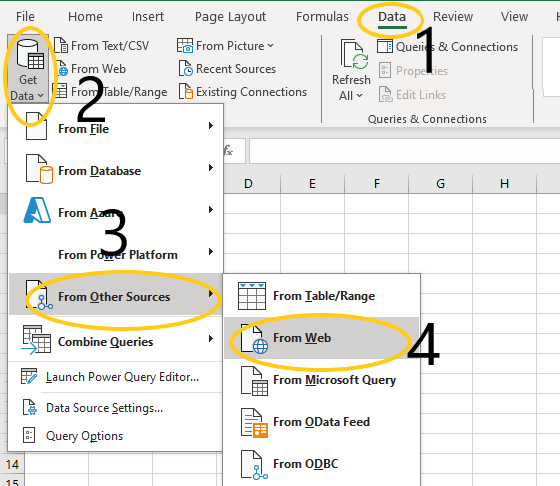Table of contents
Data is the lifeblood of any business. It drives decision-making, improves customer experiences, and helps companies stay competitive in today’s market. But with the vast amount of data available, it can be overwhelming for businesses to manage and utilize effectively. That’s where data onboarding comes in.
In this comprehensive guide, we’ll demystify data onboarding and explain why it’s essential for your business. We’ll also discuss how you can successfully onboard your data.
What is Data Onboarding?
Data onboarding is the process of transferring offline data to an online platform for analysis and use. It involves collecting, organizing, and integrating data from various sources into a single, centralized location. This allows businesses to have a complete view of their data and make informed decisions based on accurate and up-to-date information.
Why is Data Onboarding Important?

by NASA (https://unsplash.com/@nasa)
Data onboarding is crucial for businesses for several reasons:
- Improved Data Quality: By centralizing data, businesses can ensure that all data is accurate and up-to-date, reducing the risk of errors and inconsistencies.
- Enhanced Customer Insights: With all data in one place, businesses can gain a comprehensive understanding of their customers and their behaviors, allowing for more targeted and personalized marketing efforts.
- Increased Efficiency: Data onboarding streamlines the data management process, saving businesses time and resources. It also allows for faster data analysis and decision-making.
- Better Decision-Making: With a complete view of their data, businesses can make more informed decisions that drive growth and success
How to Successfully Onboard Your Data
Having gained an appreciation for the significance of data onboarding, it is pertinent to delve into the strategies for successfully executing this crucial process. The initial step involves a comprehensive assessment of your organization’s data landscape, identifying disparate sources and formats. A meticulous understanding of the data intricacies lays the groundwork for devising a well-informed onboarding strategy.
The next pivotal phase is the selection of a proficient data onboarding company or platform that aligns with your specific requirements. Collaborating with experts in the field facilitates the adoption of best practices, ensuring a seamless transition of data into a unified format. This partnership is instrumental not only in navigating the intricacies of data mapping but also in optimizing the efficiency of the onboarding process.
A crucial aspect often overlooked is the establishment of robust data quality checks. Implementing thorough validation protocols during and after the onboarding process is paramount to guarantee the accuracy and completeness of the integrated data. This diligent quality assurance mitigates the risk of inaccuracies creeping into your dataset, bolstering the reliability of the information at your disposal.
Furthermore, fostering a culture of continuous monitoring and adaptation is essential. Regularly reviewing and updating your data ensures its relevance and aligns with the evolving needs of your organization. This adaptability positions your data onboarding process as a dynamic and responsive mechanism, capable of accommodating changes in data sources, formats, or business requirements.
In essence, successful data onboarding is a strategic and iterative endeavor that demands a proactive approach, collaboration with experts, and a commitment to ongoing refinement. By embracing these principles, you can navigate the complexities of data integration and harness its full potential to drive informed decision-making within your organization.
1. Identify Your Data Sources
The first step in data onboarding is identifying all the sources of data that your business uses. This can include customer data, sales data, marketing data, and more. Make a list of all the sources and determine which ones are essential for your business.
2. Cleanse and Organize Your Data
Before onboarding your data, it’s crucial to ensure that it is clean and organized. This involves removing any duplicate or irrelevant data and organizing it in a way that makes sense for your business. This step is crucial for ensuring data accuracy and avoiding any issues down the line.
3. Choose a Data Onboarding Company
As discussed earlier, there are several data onboarding companies to choose from. Consider your business’s specific needs and budget when selecting a company. It’s also essential to research and read reviews to ensure you choose a reputable and reliable company.
4. Map Your Data
by Lukas Blazek (https://unsplash.com/@goumbik)
Data mapping is a fundamental procedure that involves aligning data fields originating from diverse sources into a standardized and unified format. This critical step is essential to guarantee the consistency of data, enabling seamless analysis. Collaborating with your selected data onboarding company becomes imperative during this phase, as their expertise can significantly contribute to the effective mapping of your data. By engaging in this collaborative effort, you ensure that disparate datasets are harmonized, facilitating a cohesive and comprehensive understanding of the information at hand. This harmonization lays the groundwork for robust data analysis, providing valuable insights that can inform strategic decision-making processes within your organization.
5. Test and Validate Your Data
Prior to the complete implementation of your data onboarding process, a critical phase involves rigorous testing and validation of the data. This entails subjecting sample data to the onboarding process, meticulously examining its accuracy and completeness. This meticulous evaluation is indispensable in identifying and rectifying any potential discrepancies or anomalies that may arise during the onboarding procedure. By conducting thorough testing, you not only validate the efficacy of the onboarding process but also establish a robust foundation for the integrity and reliability of your entire dataset. This proactive approach is instrumental in preemptively addressing any issues that might compromise the quality of your data in the future, ensuring that your organization can confidently rely on accurate and comprehensive information for informed decision-making.
6. Implement and Monitor
After the successful onboarding of your data, the subsequent step involves seamless integration into your business processes. This pivotal phase necessitates diligent monitoring of the data on a regular basis to uphold its accuracy and currency. Regular scrutiny ensures that the information retains its relevance and aligns with the dynamic needs of your organization. By consistently monitoring the data, you not only safeguard the integrity of your business processes but also gain the agility to promptly address any potential inaccuracies or discrepancies that may arise over time. This ongoing vigilance serves as a proactive measure, empowering you to make necessary adjustments to the data onboarding process in response to evolving requirements or changes in the data landscape. Consequently, this continuous oversight guarantees that your data remains a dependable and valuable asset, contributing to informed decision-making and the overall efficiency of your business operations.
Conclusion
Data onboarding is a crucial process for businesses looking to make the most of their data. By centralizing data and making it easily accessible, businesses can make more informed decisions and drive growth and success. Consider working with a reputable data onboarding company to ensure a smooth and successful onboarding process. With the right approach, data onboarding can transform the way your business operates and help you stay ahead of the competition.










